ATTRACTIONS
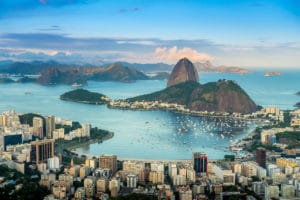
Rio de Janeiro Rio de Janeiro is the fifth-most-populous Latin American city by population, and one of the most visited cities in the Southern Hemisphere. Famed for its Copacabana and Ipanema beaches, other attractions include the Christ the Redeemer statue atop Mount Corcovado; Sugarloaf Mountain–a granite peak with cable cars to its summit; Maracana Stadium– one of the world’s largest; and Sambodromo–a grandstand-lined parade avenue used during Carnival. The city is also known for its raucous Carnaval festival featuring parade floats, flamboyant costumes and samba dancers. Rio was the host of the 2016 Summer Olympics making the city the first South American and Portuguese-speaking city to ever host the events.
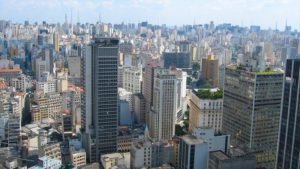 Sao Paulo is Brazil’s vibrant financial center and is among the world’s most populous cities. With numerous cultural institutions and a rich architectural tradition, its iconic buildings range from neo-Gothic and to modernist architect Oscar Niemeyer’s curvy Edificio Copan. The colonial-style Patio do Colegio church marks where Jesuit priests founded the city in 1554.
Sao Paulo is Brazil’s vibrant financial center and is among the world’s most populous cities. With numerous cultural institutions and a rich architectural tradition, its iconic buildings range from neo-Gothic and to modernist architect Oscar Niemeyer’s curvy Edificio Copan. The colonial-style Patio do Colegio church marks where Jesuit priests founded the city in 1554.
The metropolis is also home to several of the tallest skyscrapers in Brazil, including the Mirante do Vale, Edificio Italia, Banespa, North Tower and many others. The city has cultural, economic and political influence both nationally and internationally. It is home to monuments, parks and museums such as the Latin American Memorial, the Ibirapuera Park, Museum of Ipiranga, Sao Paulo Museum of Art, and the Museum of the Portuguese Language. The city holds events like the Sao Paulo Jazz Festival, Sao Paulo Art Biennial, the Brazilian Grand Prix, Sao Paulo Fashion Week, the ATP Brasil Open, the Brasil Game Show and the Comic Con Experience. The Sao Paulo Gay Pride Parade rivals the New York City Pride March as the largest gay pride parade in the world. The municipality is also the Earth’s 11th largest city proper by population and wealthiest state in Brazil.
 Christ the Redeemer One of the most recognized landmarks in the world, Christ the Redeemer, is an Art Deco statue of Jesus Christ in Rio de Janeiro, Brazil. It is 30 meters high, excluding its 8-metre pedestal. The arms stretch 28 meters wide. The statue weighs 635 metric tons. It is made of reinforced concrete and soapstone. Located at the peak of the 700-metre Corcovado mountain in the Tijuca Forest National Park overlooking the city of Rio de Janeiro. The statue is a recognized symbol of Christianity across the world, has also become a cultural icon of both Rio de Janeiro and Brazil, and is listed as one of the New7Wonders of the World.
Christ the Redeemer One of the most recognized landmarks in the world, Christ the Redeemer, is an Art Deco statue of Jesus Christ in Rio de Janeiro, Brazil. It is 30 meters high, excluding its 8-metre pedestal. The arms stretch 28 meters wide. The statue weighs 635 metric tons. It is made of reinforced concrete and soapstone. Located at the peak of the 700-metre Corcovado mountain in the Tijuca Forest National Park overlooking the city of Rio de Janeiro. The statue is a recognized symbol of Christianity across the world, has also become a cultural icon of both Rio de Janeiro and Brazil, and is listed as one of the New7Wonders of the World.
TRAVEL ADVENTURE

Brazil, with its subtropical forests, historic neighborhoods and unique attractions is an amazing destination sure to delight tourists of all ages. Travelers will be astonished by the lush natural surroundings and the many things to do and see in Brazil. Both a tropical paradise and an exciting cultural destination with attractions for all tastes, from idyllic beach holidays and jungle explorations to world-class art museums and the pulsing rhythms of Rio’s Carnival.
The crystal waters, tall palm trees, and broad stretches of silver are only a few of the reasons why Porto de Galinhas is frequently cited as Brazil’s best beach. Brazil has an amazing range of impressive waterfalls of all sizes and shapes. Iguacu Falls, in eastern Parana, is one of the most spectacular waterfalls in the world, truly a sight to see. Brazil’s National Park is another wonder. Walk through the flourishing Missioner Forest, see the breathtaking Iguassu Falls and enjoy all nature has to offer, including spectacular views and amazing scenery.
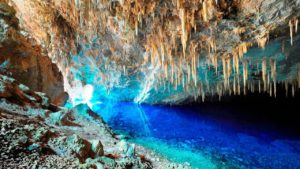 The Gruta Do Lago Azul, also known as the Blue Lake Grotto, is a cave that houses a stunningly clear blue pool that is over 200 feet deep. Visitors from all over the world flock to the Blue Lake Grotto to see its stunning azure sites. In recent years, thousands of prehistoric animal bones have been found at the bottom of the cave. Archaeologists have found everything from the bones of giant sloths to saber tooth tigers. The Serra de Capivara National Park is a UNESCO World Heritage Site that attracts visitors from all over the world. The park has a large number of prehistoric sites with paintings that date back centuries.
The Gruta Do Lago Azul, also known as the Blue Lake Grotto, is a cave that houses a stunningly clear blue pool that is over 200 feet deep. Visitors from all over the world flock to the Blue Lake Grotto to see its stunning azure sites. In recent years, thousands of prehistoric animal bones have been found at the bottom of the cave. Archaeologists have found everything from the bones of giant sloths to saber tooth tigers. The Serra de Capivara National Park is a UNESCO World Heritage Site that attracts visitors from all over the world. The park has a large number of prehistoric sites with paintings that date back centuries.
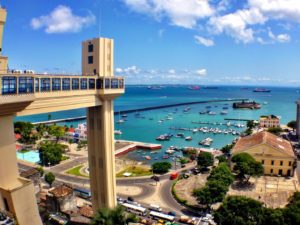 When the Lacerda Elevator opened in 1873, it held many world records, including one for being the highest elevator in the world at 63 meters and for being the world’s first urban elevator. The elevator is considered one of the most popular attractions in Brazil and attracts visitors from all over the world. At the top of the towers, you can see an amazing view of the surrounding areas, including the Mercado Modelo, the Bay of All Saints, and the Fort of Sao Marcelo.
When the Lacerda Elevator opened in 1873, it held many world records, including one for being the highest elevator in the world at 63 meters and for being the world’s first urban elevator. The elevator is considered one of the most popular attractions in Brazil and attracts visitors from all over the world. At the top of the towers, you can see an amazing view of the surrounding areas, including the Mercado Modelo, the Bay of All Saints, and the Fort of Sao Marcelo.
THE PEOPLE
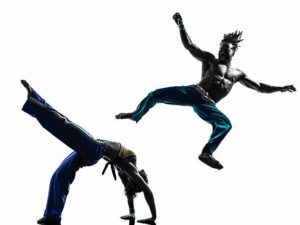
Brazilians are reputedly one of the most hospitable people in the world and foreigners are usually treated with respect and often with true admiration. They are fun-loving people. While Southerners may be somewhat colder and more reserved, from Rio upwards people usually boast a captivating attitude towards life and truly enjoy having a good time. Friendship and hospitality are highly praised traits, and family and social connections are strongly valued. To people they have met, or at least know by name, Brazilians are usually very open, friendly and sometimes quite generous. Once introduced, until getting a good reason not to, a typical Brazilian may treat you as warmly as he would treat a best friend.
Music plays an important part in Brazilian identity. A mixture of martial arts, dance, music and game, capoeira was created by African slaves brought to Brazil, mainly from Portuguese Angola. Distinguished by vivacious complicated movements and accompanying music, it can be seen and practiced in many Brazilian cities. The traditional lifestyle and graphic expressions of the Wajapi indigenous group from the state of Amapa were proclaimed a Masterpiece of the World’s Intangible Heritage by UNESCO.